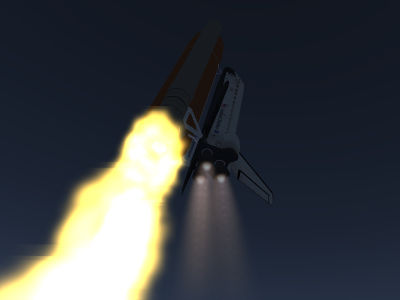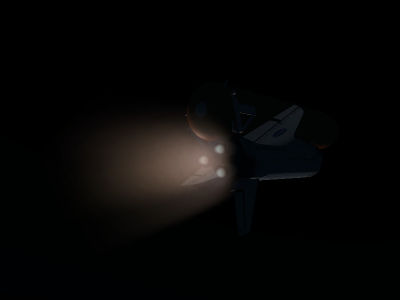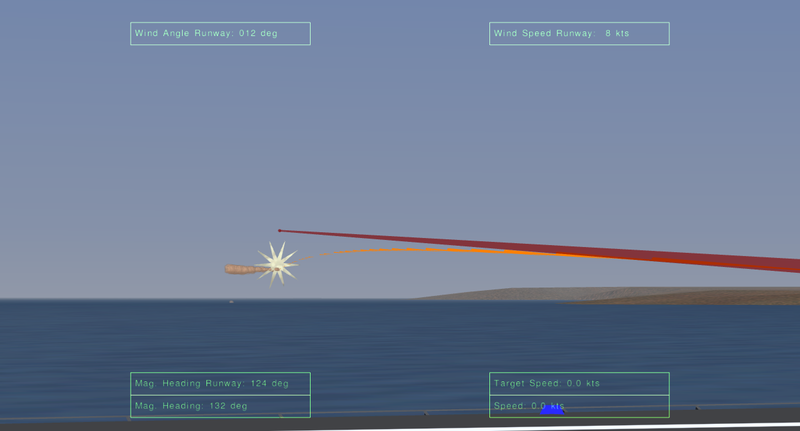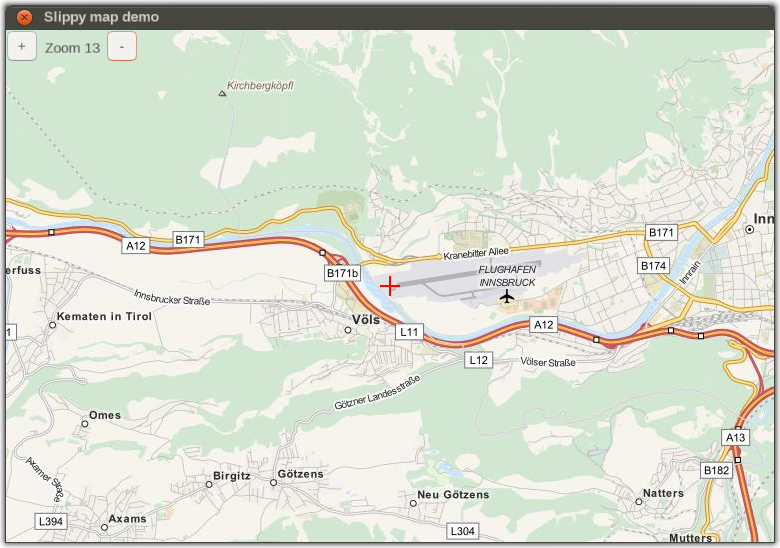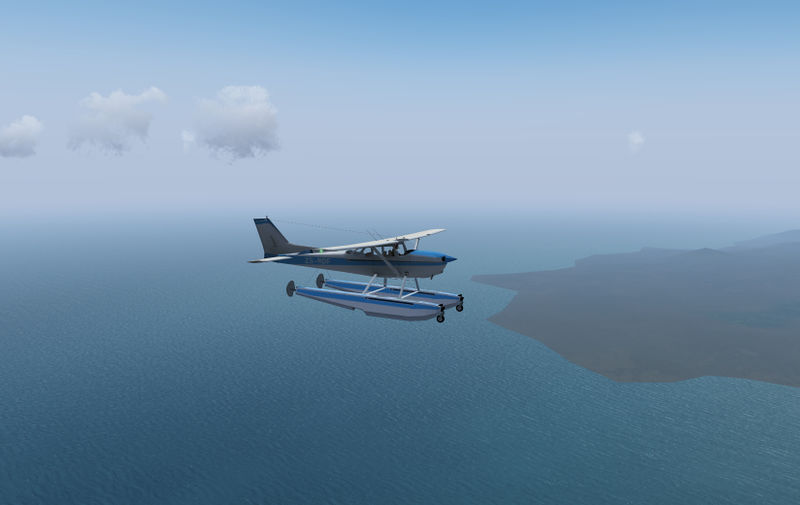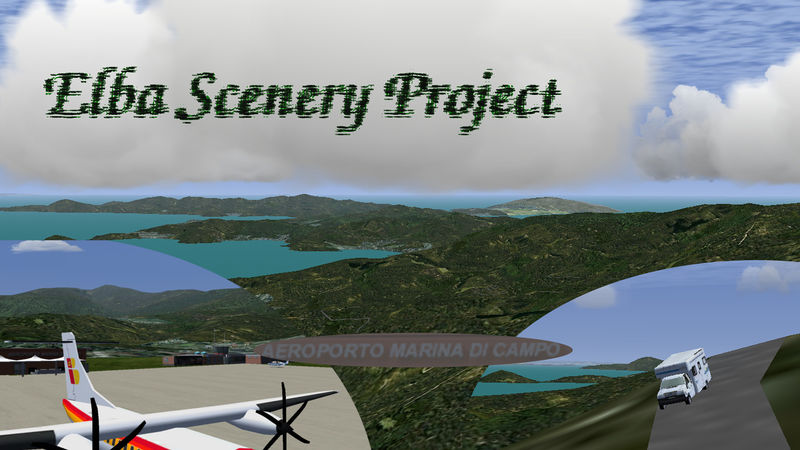FlightGear Newsletter May 2015
Development News
Feature freeze approaching
On the 17th of June, the FlightGear development stream will be declared frozen. This means that, from that date onwards, no new features or major changes shall be pushed onto the development streams (neither source nor data). This period is for preparing the code for the upcoming 3.6 release (August 17) and make sure there are no major issues. It lasts for four weeks until creation of the release branches (July 17).
It is a good idea for aircraft developers to adhere to this rule. However, aircraft in FGAddon may be handled as an exception from the frozen state. Also, aircraft defined as part of the base package (the c172p and ufo) enter the frozen state and shall not undergo major changes in that period.
See our Release plan for more details on the procedures leading to a release.
Exhaust flames
The latest addition to the Atmospheric Light Scattering framework is a procedural shader effect to render thruster and afterburner exhaust flames. This effect integrates over a 3d-distribution of glowing emitters in a bounding box, which means that it doesn't generate sharp edges in the visuals.
Flame color, density, distribution of shock diamonds and widening in thin atmosphere are all runtime configurable, allowing to account realistically for changes in thrust or ambient pressure.
In the example application for the Space Shuttle main engine below, note how the exhaust plume is narrow and shows pronounced shock diamonds early on, while it widens in the thin upper atmosphere.
Find out more at ALS technical notes#The exhaust flame effect…
Automated checklist execution
User sanhozay, as part of the development of the Lockheed Constellation, has developed a new script that automatically exceutes checklist bindings in sequence.[1] The script enables aircraft developers to execute checklists from any Nasal script.
The script can be seen in action on the latest Lockheed Constellation from FGAddon, although you will need the latest copy of FGData (or a copy of autochecklist.nas).
You can find out more at Aircraft Checklists#Automated checklist execution.
Submodel enhancements
Thanks to some brilliant work on the submodel system by Onox, it is now possible to adjust various offsets, including heading and pitch, during runtime. Furthermore, the x, y, and z offsets are also now defined in metric units. Finally, the randomness of the azimuth (heading), elevation (pitch), Cd (Coefficient of drag), and life can be defined. You can find out more at Howto:Add submodels.
Sound position fixes
The sound subsystem has been given some fixes so that the distance between the position of the current view and the sound's position is now computed more correctly.
Nasal/Canvas: A simple tiled map
Using the Canvas GUI and the Nasal HTTP module, you can make a simple tiled map (shown below) using images downloaded on the fly. You can find out more at Canvas Snippets#A simple tile map.
New ATC-pie release
ATC-pie now provides a solo training mode for ATCs. Using the same interface as the multiplayer game mode and an additional instruction pane, you can choose to play offline and control virtual aircraft as Tower, Approach, Departure, or any combination of those positions. As MP traffic still can be scarce in many occasions on our network, this new game mode can be a solution for you not to give up on a planned session and give yourself some challenge. Also, you may learn from it enough to make your own MP sessions more popular over the network!
The main features are:
- Free combination choice of APP, TWR and DEP control positions for custom training
- Handovers to and from virtual ATCs
- Instruction interface and pilot read back
- Adjustable difficulty (traffic density)
- Departure/arrival and ILS/visual balance options
- Configurable runways in use, entry and exit points
Cross-compiling FlightGear
Users hamzaalloush and saiarcot895 have been making lots of progress using MXE and MinGW to build Windows binaries on Linux.[2] The goal is to provide FlightGear/osgEarth binaries for Windows end-users via cross-compiling on Linux, so that end-users no longer need to be able to build FlightGear from source, but can just download pre-compiled binaries for different FlightGear versions. As of May 2015, OpenSceneGraph and osgEarth can be cross-compiled and run most of their respective examples:
People interested and invited to help should ideally have at least one of the following skills:
- Familiar with building FlightGear from source.
- Familiar with using Git.
- Having access to Linux and/or Windows (alternatively, via emulation or virtualization) to help with testing or developing these cross-compiled binaries.
- Familiar with CMake, the GNU build system, or GCC (GNU Compiler Collection) internals.
To show your interest, please leave your system specs (e.g., OS, distribution) on the forum thread so a list can be made of people with the necessary skillset.
| Note Most testing/development is currently taking place on Ubuntu 14.04. If you have a different distribution, you should be prepared to do some integration/porting work. |
The next steps ahead include:
- Getting osgEarth.mk to compile/link via MXE
- Creating corresponding simgear.mk/flightgear.mk files for MXE
- Investigating porting poweroftwo's autobuilder to use MXE for building a patched version of SimGear/FlightGear including osgEarth support.
For details and updates, please refer to Building FlightGear - Cross Compiling.
In the Hangar
Amphibious variant of the C172p
The development of the c172-detailed continues; a new variant has been added with pontoons (optionally with wheels) so that it can land on water. This stunning aircraft will replace the old C172p in the upcoming FlightGear 3.6. You can follow the c172-detailed's progress on the forum development thread
Scenery Corner
Scenery Project Elba
The Scenery Project Elba has been started, aiming at improving the scenery of Elba, an island west of Italy. You can find out more on the wiki page and the forum development thread. Contributions are welcome!
SVMI Release 1.0
Aeropuerto Internacional Simon Bolivar (SVMI) in Venezuela has been undergoing development since January by legoboyvdlp, and now release 1.0 has arrived. This release features:
- New apt.dat 850 layout
- Corrected terrain (the hill north of 10/28 is now correct)
- Static planes
- Working jetways (by viveFG)
- Beautiful models (by viveFG)
This project is released under the GNU GPL, and will hopefully be included in World Scenery 2.0 via TerraSync! This airport may be downloaded from GitHub along with TNCM which has been fixed by legoboyvdlp with a quick-n-dirty hack to stop flooding.
Contributing
Translators required
| The FlightGear Wiki still needs help for translating it into various languages. If you are interested in making the FlightGear Wiki multi-language then start at Help:Translate. | |
| Das FlightGear Wiki benötigt immer noch Hilfe bei der Übersetzung in verschiedene Sprachen. Wenn Du Interesse daran hast, das FlightGear Wiki Mehrsprachig zu machen, dann fang doch mit Help:Übersetzen an. | |
| De FlightGear Wiki kan nog steed hulp gebruiken bij het vertalen van artikelen. Als je interesse hebt om de wiki meertalig te maken, raden we je aan om een kijkje te nemen bij Help:Vertalen. | |
| La wiki de FlightGear todavía necesita ayuda para traducirla a varios lenguajes. Si estás interesado en hacer la FlightGear wiki multilingüe, entonces comienza en Help:Traducir. | |
| La wiki de FlightGear encara necessita ajuda per traduir-la a diverses llengües. Si esteu interessat en fer la wiki de FlightGear multilingüe, llavors comenceu a Help:Traduir. |
FlightGear logos
If you want some graphic elements for your FlightGear-related site (such as a hangar or YouTube channel), please feel free to visit FlightGear logos for a repository of logos. And if you have some art skills, please don't hesitate to contribute with your own design creations.
Screenshots
The FlightGear project always needs screenshots, which show features that were added since the last release. These should be of good quality, especially in content and technical image properties. It is therefore recommended to use the best viable filter settings (anti-aliasing, texture sharpening, etc.). More info at Howto:Make nice screenshots.
References
|

